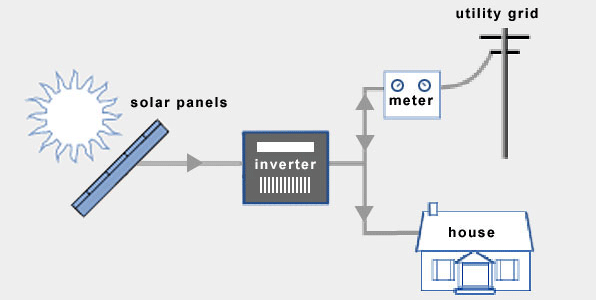
Grid Harmony: Unleashing the Power of Solar Systems
The integration of solar energy into the power grid has led to the rise of grid-tied solar systems. This article explores the concept, benefits, and implications of grid-tied solar systems, shedding light on how they are transforming the energy landscape.
Understanding Grid-Tied Solar Systems
Grid-tied solar systems are interconnected with the local electrical grid. Unlike off-grid systems that operate independently, grid-tied systems allow users to draw electricity from both solar panels and the grid. This bidirectional flow enables excess energy generated by the solar system to be fed back into the grid, and users can pull electricity from the grid when solar production is insufficient.
Seamless Integration with the Grid
The seamless integration of grid-tied solar systems with the electrical grid enhances their flexibility and efficiency. During periods of high solar production, excess electricity can be supplied to the grid, reducing the load on conventional power sources. Conversely, when solar production is low, users can draw electricity from the grid without interruption, ensuring a reliable power supply.
Financial Benefits and Net Metering
One of the significant advantages of grid-tied solar systems is the potential for financial benefits through net metering. Net metering allows users to receive credit for the excess electricity they contribute to the grid. This credit can offset the electricity drawn from the grid during periods of low solar production, leading to reduced overall electricity bills and, in some cases, potential income.
Enhanced Affordability and Cost Savings
The grid-tied nature of these solar systems contributes to their enhanced affordability. Users can install a system tailored to their energy needs without the need for extensive energy storage, reducing the initial investment. The ability to leverage the grid for additional power further enhances the cost-effectiveness of grid-tied solar installations.
Environmental Impact and Reduced Carbon Footprint
Grid-tied solar systems play a vital role in reducing the environmental impact of energy consumption. By relying on solar power, users decrease their dependence on fossil fuel-based electricity from the grid. This transition to cleaner energy sources contributes to a reduced carbon footprint, making grid-tied systems an environmentally conscious choice.
Backup Power and Grid Resilience
While grid-tied solar systems typically shut down during grid outages for safety reasons, certain configurations allow for backup power through the use of battery storage. This capability enhances grid resilience by providing a supplementary power source during emergencies. Users can have a degree of energy independence while still benefiting from grid connectivity.
Scalability and Customization
Grid-tied solar systems offer scalability and customization options to meet varying energy needs. Users can start with a smaller installation and expand the system as energy demands increase. This scalability makes grid-tied systems suitable for both residential and commercial applications, providing adaptability to changing energy requirements.
Grid-Tied Solar Systems for Businesses
Businesses can particularly benefit from grid-tied solar systems. The ability to offset electricity costs, take advantage of financial incentives, and demonstrate commitment to sustainability enhances the appeal of solar installations for commercial entities. Grid-tied systems align with corporate social responsibility goals while offering tangible economic advantages.
Regulatory Support and Incentives
Many regions provide regulatory support and incentives for grid-tied solar systems. Governments may offer net metering programs, tax credits, and rebates to encourage the adoption of solar energy. This support not only makes grid-tied systems more financially attractive but also aligns with broader efforts to transition towards cleaner and more sustainable energy sources.
Exploring Further: Grid-Tied Solar Systems
For a comprehensive exploration of grid-tied solar systems, their benefits, and considerations, visit Grid-Tied Solar Systems. This resource provides valuable insights and information to guide individuals and businesses in understanding and harnessing the power of grid-tied solar installations.

